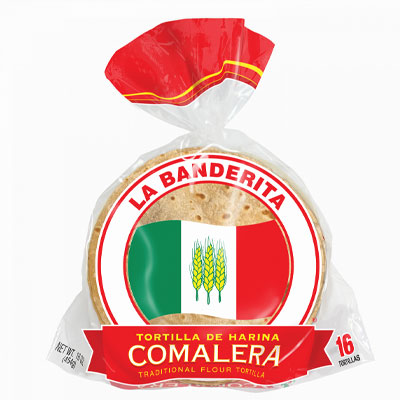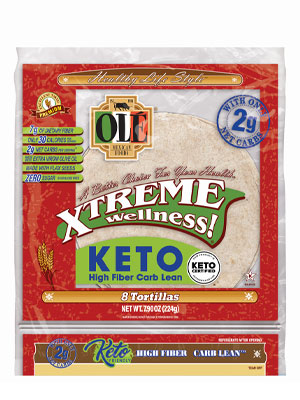KANSAS CITY — The secret for success for Tacombi has been around for centuries. It’s all about connecting American consumers to the true taste of Mexico.
Following this simple mission, the producer of Vista Hermosa branded tortillas had been busting at the seams at its 5,000-square-foot facility. In February, the company opened a 30,000-square-foot operation in Brooklyn, NY, that houses a couple of flour tortilla lines and a corn production room that makes tortillas and soon its Totopos branded corn chips.
“We do it the old-fashioned way,” said Laura Merritt, president of Tacombi. “We’re trying to show that truly authentic Mexican food has the highest standards for ingredients and sourcing and is a premium product. That’s really our difference.”
Vista Hermosa tortillas now are sold in 40 states at natural food stores as well as in its 15 Tacombi taquerias, where it offers traditional Mexican cuisine in New York, Miami and Washington.
“We’re one of the few companies that uses corn that’s 100% nixtamalization, which provides a more corn-forward flavor, but it’s also more aromatic and unlocks a lot more nutrient density,” Ms. Merritt said.
Today’s successful tortilla producers are delving into the roots of classic Mexican cuisine to set them apart in this highly competitive market.
“There is nothing homogeneous about Mexican cuisine,” she said. “If you go into any one of our restaurants, you’re able to experience dishes from around the country because our mission is ‘connecting you to Mexico,’ and we use those dishes from around Mexico to connect people to different parts of the country. In the future with our innovation pipeline, we can pick up tortilla ideas from around Mexico and tell the story on the back of the package about why this certain region in Mexico makes them a certain way.”
 Photo: Olé Mexican Foods
Photo: Olé Mexican FoodsUnlike the conventional Mexican and Tex Mex restaurant chain food that many Americans grew up eating, the “real deal” involves an array of flavorful regional flavors and specialty entrees from different parts of the country, said Enrique Botello, senior marketing director, Olé Mexican Foods, the Norcross, Ga.-based producer of La Banderita Authentic Tortillas.
In Southern and Central Mexico, Mr. Botello pointed out, corn tortillas fuel the diet, although they can come in different sizes depending on the region. In Northern Mexico, flour tortillas predominate.
Such regional preferences for tortillas also are found in the United States and are fueling product innovation at Olé Mexican Foods.
In Texas, for instance, the company offers smaller, 6-inch, fajita-sized tortillas, while 8- or 10-inch tortillas are more popular in Western states where it launched its King Corn large tortillas that are used for frying and making taquitos. In the Northeast, wraps are a top seller.
“In Arizona, they like a thinner, almost translucent tortilla,” Mr. Botello said. “We launched one called Comalera for the grill. That’s a tortilla that will do really well in Arizona and Texas.”
With its new tortilla facility, Tacombi and its Vista Hermosa brand have plenty of room to grow. In addition to expanding its footprint in the Northeast, the company has expanded into the mid-Atlantic and Texas and out West, and it’s even looking to expand with burritos this year.
“I am particularly excited that we’re performing so well in Texas because if you look at the authoritative pockets on Mexican food in the country, winning in California and Texas is really important,” she said. “We’ll continue to expand across the country and make sure we’re a well-known and loved brand in the natural channel and will continue to expand out into the conventional.”
As the company branches out, Ms. Merritt said, it’s vital that the brand stays true to its roots.
“Knowing what authentic looks like and tastes like really gives us an opportunity to share a little bit of Mexico to all of our consumers that they can enjoy at home and share with others,” she noted.
Sales spike in category
Overall sales of hard and soft tortillas and taco kits jumped 16.5% to $3.87 billion, according to data by Circana, formerly IRI and NPD Group, for the 52 weeks ended May 21. Unit sales increased 1.4%, exhibiting further proof that tortillas and taco kits are performing better than other food categories, which have seen declines in units as inflation takes its toll on consumer spending habits. In fact, Melissa Altobelli, principal in client insights for dairy and bakery for Circana, suggested tortilla sales could benefit if supply chain issues subside.
“In general, ingredients have been a challenge for tortilla and flatbread makers, just like for bread and anything else, but with unit sales being relatively flat, the category was able to overcome those challenges,” she said.
Jim Kabbani, chief executive officer, Tortilla Industry Association, is surprised to see that the current recovery of the restaurant sector did not decrease or eat into the sales in the retail channel.
“During COVID, restaurants were running on fumes,” Mr. Kabbani said. “A lot of that business was greatly reduced, and people were buying their tortillas from retail outlets instead. The assumption was that once the pandemic got under control and people started going back to restaurants that the business would shift back to the way it was before the pandemic. But it stayed robust in the retail category while, at the same time, recovering in the restaurant channel.”
In general, Ms. Altobelli said, tortilla and flatbread sales reflect the performance of the overall bakery category. Mass merchandising and club store channels are gaining share in tortillas and flatbreads similar to what researchers are seeing in the total food and beverage market. Consumers are seeking value that mass merchandisers and club stores provide with larger pack sizes typically selling for less on a per-ounce basis.
Better-for-you growth
Ms. Altobelli added about 50% of the growth in center store tortilla sales can be attributed to better-for-you (BFY) products, primarily low-carb, low-calorie and high-fiber items. However, keep in mind that BFY tortillas account for about 16% of sales from the major brands in this market and include such items as Mission Carb Balance from Mission Foods, Irving, Texas, and Flatout Carb Down from the Flatout Group, Mundelein, Ill., among others.
Olé Mexican Foods also plays in the BFY market in a big way. Its La Banderita Carb Counter, for instance, is low in carbohydrates, has a similar taste to a traditional tortilla and is certified keto by a third party, which is key for establishing trust with consumers, Mr. Botello said.
“La Banderita Carb Counter is for those people who want to lose weight for a period of time,” he noted. “They may be following the keto diet for four or six months. When people are on the keto diet, they are very strict. They are buying only keto products. Obviously, they want the best-tasting tortilla but one that is low in carbs, and they find that with La Banderita Carb Counter.”
 Photo: Olé Mexican Foods
Photo: Olé Mexican FoodsMoreover, Olé Xtreme Wellness products are whole wheat tortillas that are high in fiber and low in carbs.
“Consumers who are looking for this tortilla are people whose whole lifestyles are about wellness,” Mr. Botello said. “They are looking for the best option for all their meals. They really like this tortilla because it’s high in fiber. It helps with digestive health, and it’s also low in carbs.”
These consumers, he added, tend to cook with ingredients like extra virgin olive oil or turkey bacon. Shoppers who are over 50 also look at fiber as a digestive aid, while younger consumers in their 20s prefer fiber for its prebiotic benefits.
Toufayan Bakeries rolled out keto flatbread, pita and wraps last year in response to the popularity of the diet. The Ridgefield, NJ-based company also offers a host of other BFY products that are organic, vegan, low sodium and gluten-free.
“We have received even better-than-anticipated reactions to our keto bread,” said Karen Toufayan, vice president of marketing and sales, Toufayan Bakeries. “From ingredients to taste and texture, our keto line is receiving rave reviews from influencers on social media and on Amazon. The keto diet has been around more than 30 years, with 2017 bringing a spike in interest that continues today. As consumers look to packaged foods to fill their specialty diet needs, I would look at offering these products as more of a necessary ‘new normal’ to stay ahead of the curve with product development as a trend.”



